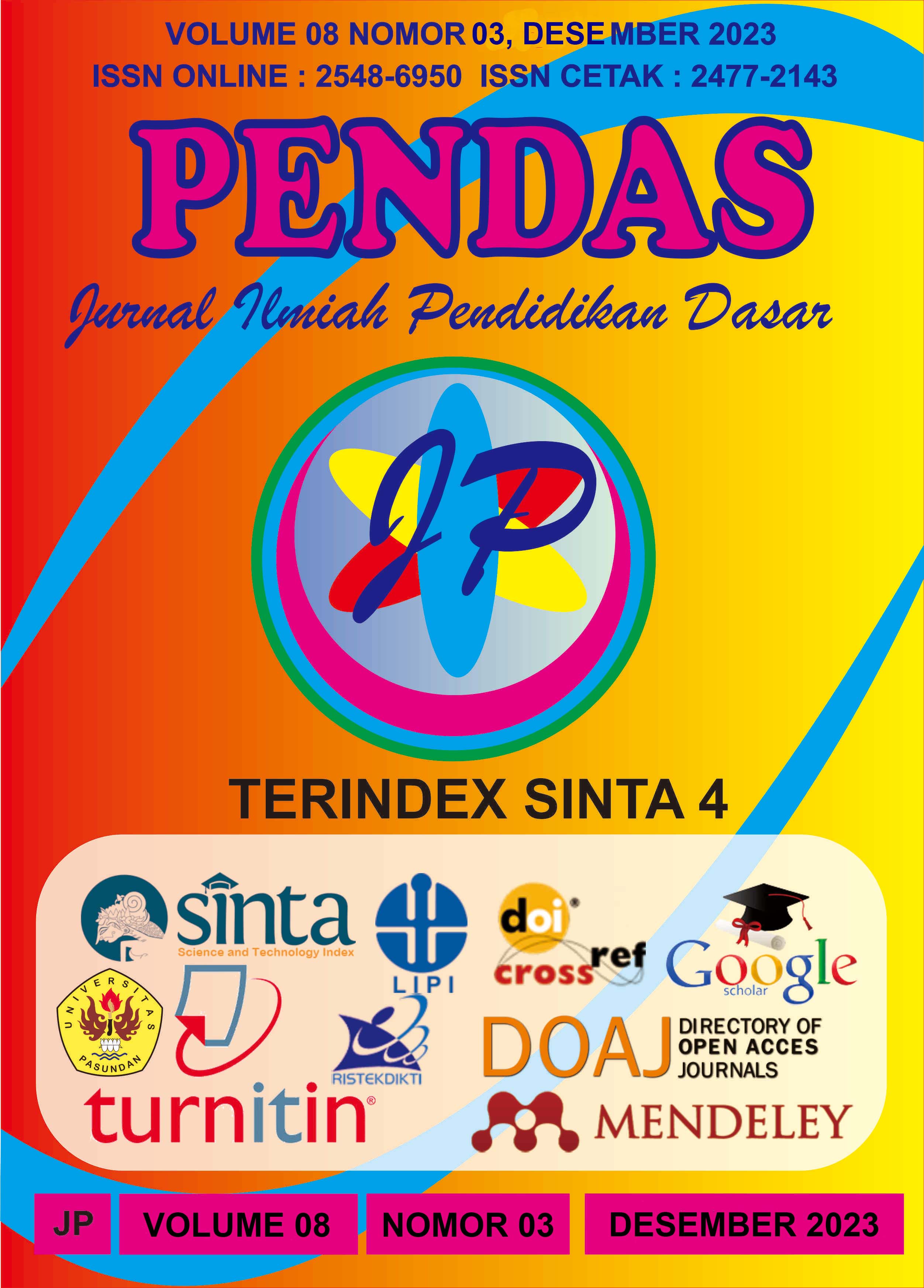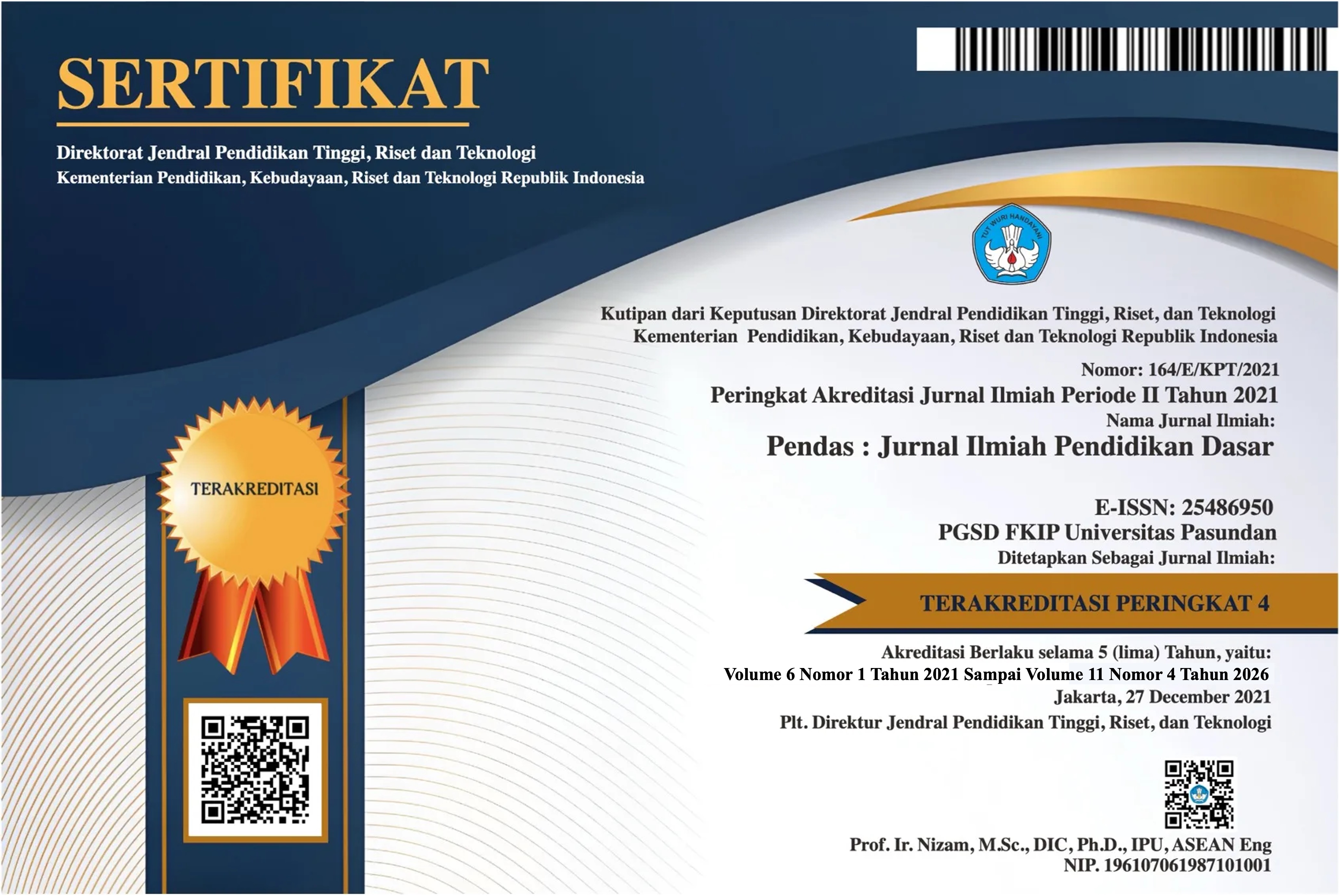PENGARUH METODE CIRC TERHADAP HASIL BELAJAR DITINJAU DARI KEMAMPUAN MEMBACA SISWA KELAS 2 SD
DOI:
https://doi.org/10.23969/jp.v8i3.11132Keywords:
CIRC method, learning outcomesAbstract
This research was motivated by the lack of reading ability of students in second grade. This is shown by the fact that children's writing and reading scores are always below the Minimum Completeness Criteria (KKM). The CIRC technique is one of many learning methods used to solve this problem. The aim of this research is to explain how the CIRC method helps students' reading abilities. This research uses quantitative methods. Researchers plan to conduct trials before subjects receive therapy. Results may be more precise. According to research, there is an increase in the number of students whose KKM is achieved each semester as well as the average exam score. The completion level for control class I was 56.67, and experimental class II was 81.88. The results support the idea that the application of the CIRC method can help students in reading. Student responses in improving reading and writing skills were 29.00 which was done in various ways including summarizing, explaining and answering questions.Downloads
References
Abidin, Y. (2012). Model penilaian otentik Dalam pembelajaran membaca pemahaman Beroreintasi pendidikan karakter. Jurnal Pendidikan Karakter, 3(2).
Arikunto, S dan Cepi. (2004). Evaluasi Program Pendidikan Pedoman Teoretis Praktis Bagi Praktisi Pendidikan. Jakarta: Bumi Aksara.
Chapman, B., Slavin, M., Marriott, D., Halliday, C., Kidd, S., Arthur, I., ... & Australian and New Zealand Mycoses Interest Group. (2017). Changing epidemiology of candidaemia in Australia. Journal of Antimicrobial Chemotherapy, 72(4), 1103-1108.
Dalyono. 2012. Psikologi Pendidikan. Jakarta: Rineka Cipta
Dewi, I. 2012. Strategi Pembelajaran Terpadu. Yogyakarta: Familia Group Relasi
Dimyati. 2016. Belajar dan Pembelajaran. Jakarta : PT Rineka Cipta
Fitriyah, Rohmatul; Wibowo, Satrio; Octavia, Rosyidah Umami. Pengaruh Model Discovery Learning dan Kemandirian Belajar terhadap Hasil Belajar Siswa di Sekolah Dasar. Edukatif: Jurnal Ilmu Pendidikan, 2021, 3.4.
Huda, M. (2014). Model-Model Pengajaran dan Pembelajaran. Yogyakarta: Pustaka Pelajar.
Hopkins, D. (2011). Panduan Guru: Penelitian Tindakan Kelas. Yogyakarta: Pustaka Pelajar.
KEMENDIKBUD. (2016). Panduan Penilaian Untuk Sekolah Dasar (SD). Jakarta: Kemendikbud.
Nuzula, Ila Firdausi; Wulan, Budhi Rahayu Sri; Nurhayati, Eni. Pengaruh percobaan sederhana terhadap hasil belajar siswa pada tema 2 subtema 2 di kelas IV sekolah dasar. UM Palangkaraya (Tunas), 2022, 7.1.
Pakpahan, T. A. B., Waina, A., & Syaukani, F. (2022). Pembelajaran Membaca Berbasis Pendidikan Karakter. Jurnal Multidisiplin Dehasen (MUDE), 1(3), 387-392. .
Rahim, M. A. (1983). Rahim Organizational Conflict Inventory–II. Journal of Applied Psychology.
Slavin, R. E. (1996). Research on cooperative learning and achievement: What we know, what we need to know. Contemporary educational psychology, 21(1), 43-69.
Downloads
Published
Issue
Section
License
Copyright (c) 2023 Pendas : Jurnal Ilmiah Pendidikan Dasar

This work is licensed under a Creative Commons Attribution 4.0 International License.



















